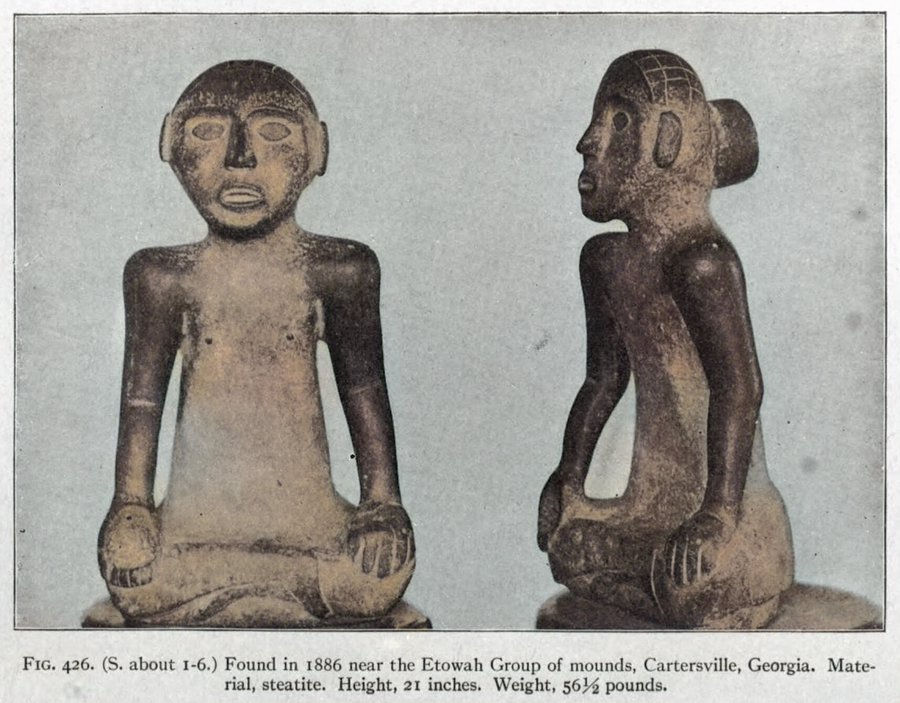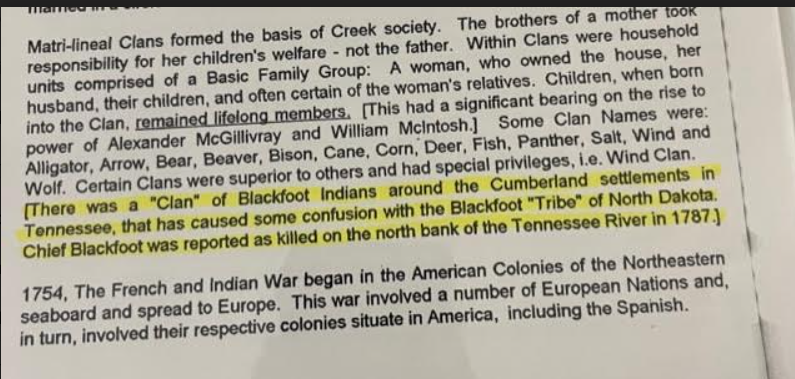GRANDMA WAS RIGHT!! The Blackfoot Indians historical documentation
- Ishmael Bey

- Jun 29, 2022
- 4 min read
Updated: Apr 17
The elders would tell the oral history since time immemorial of the Blackfoot Cherokee and Blackfoot Indians. We now have the documented historical proof of the Blackfoot Clan and Chief

Cherokees and some of the ancestors of the Creeks had a long history of interaction in the north Georgia mountains. Both had ancestors who were part of the Mississippian Periodchiefdoms (A.D. 800-1600) and who built impressive mounds throughout Georgia. With the arrival of Spanish explorers and Old World diseases, the chiefdoms collapsed, and remnant populations coalesced into new political entities, such as the Cherokees and Creeks. North Georgia subsequently served as a dynamic borderland between the two groups after the arrival of the British in the Southeast.
BlackFoot Indians Clan




“ It is also speculated that "Blackfoot Cherokee" refers to a band of Cherokee that had black ancestry, most likely from the adoption of escaped slaves into their society. This band of Cherokee, however, have no connection to the Blackfoot nations.
https://www.newworldencyclopedia.org/entry/Blackfoot
Chief Blackfoot (c. 1750-1787) was a significant figure in the history of the Cherokee Nation during the late 18th century. Known for his military leadership and diplomatic skill, Blackfoot played a pivotal role in shaping Cherokee relations with the United States during a time of great change and upheaval.
Born in the early 1750s, Blackfoot was a member of the Cherokee Nation and likely grew up in what is now North Carolina. Little is known about his early life, but by the late 18th century, he had emerged as a prominent leader within the Cherokee Nation.
In 1787, Blackfoot was appointed as one of the Cherokee Nation's three principal chiefs, alongside Bloody Fellow and The Pumpkin. As a leader, Blackfoot was known for his efforts to maintain Cherokee independence and sovereignty in the face of increasing pressure from white settlers and the U.S. government.
During the late 1780s Blackfoot played a key role in negotiating several treaties between the Cherokee Nation and the United States. These included the Treaty of New York in 1790, which sought to establish a boundary between Cherokee lands and the United States, and the Treaty of Philadelphia in 1791, which sought to establish a framework for peaceful relations between the two nations.
Despite his efforts at diplomacy, Blackfoot also recognized the importance of military strength in protecting the Cherokee Nation from outside threats. In 1700's, he led a successful campaign against the Creek Nation, a traditional Cherokee rival, and helped to secure Cherokee control over a large area of land in what is now Georgia.
Blackfoot's leadership and legacy continued to be felt in the years after his death in 1787. His efforts to protect Cherokee sovereignty and negotiate with the United States set a precedent for future Cherokee leaders, and his military victories helped to solidify Cherokee power in the face of external threats.
Footnotes:
Wilkins, David E. "Chief Blackfoot and the Three Cherokee Chiefs." The Georgia Historical Quarterly, vol. 69, no. 1, 1985, pp. 13-28.
Mooney, James. History, Myths, and Sacred Formulas of the Cherokees. University of Nebraska Press, 1992.
Perdue, Theda. Cherokee Women: Gender and Culture Change, 1700-1835. University of Nebraska Press, 1998.
Anderson, William L. Cherokee Removal: Before and After. University of Georgia Press, 1991.
In the late 18th century, the Cherokee Nation was facing significant challenges as the United States continued to expand its territory and encroach upon Cherokee lands. The Cherokee had historically been one of the most powerful Indigenous nations in the Southeast, with a sophisticated agricultural system and a complex social and political structure.
However, by the late 1700s, the Cherokee were facing increasing pressure from white settlers who coveted their land, as well as from rival Indigenous nations such as the Creek and the Shawnee. In response to these threats, the Cherokee leadership sought to maintain their independence and sovereignty while also adapting to the changing political and social landscape.
Chief Blackfoot played a key role in this effort, serving as a military leader and diplomat during a time of great change and upheaval. As one of the three principal chiefs of the Cherokee Nation, he worked to negotiate treaties and establish boundaries with the United States, while also seeking to maintain Cherokee cultural practices and traditional ways of life.
In addition to his political and diplomatic work, Chief Blackfoot was also known for his military prowess. He led campaigns against rival Indigenous nations such as the Creek, as well as against white settlers who sought to encroach upon Cherokee lands. These military victories helped to solidify Cherokee power and influence in the region.
Despite his efforts, however, the Cherokee Nation continued to face significant challenges in the years following Chief Blackfoot's leadership. The Indian Removal Act of 1830, which sought to forcibly remove Indigenous nations from their ancestral lands and relocate them to Indian Territory in present-day Oklahoma, had devastating consequences for the Cherokee and other nations in the Southeast.
Today, Chief Blackfoot is remembered as a key figure in the history of the Cherokee Nation, and his leadership and legacy continue to inspire and inform contemporary efforts to protect and preserve Indigenous cultures and sovereignty in the United States.
Footnotes:
Remini, Robert V. Andrew Jackson and the Course of American Democracy, 1833-1845. Harper & Row, 1984.
Wilkins, David E. "Cherokee Politics in the Era of the American Revolution, 1760-1801." The William and Mary Quarterly, vol. 34, no. 2, 1977, pp. 253-276.
Perdue, Theda. The Cherokee Nation and the Trail of Tears. Penguin Books, 2008.
Anderson, William L. "The Cherokee Treaty of 1791: A Reappraisal." The Georgia Historical Quarterly, vol. 75, no. 2, 1991, pp. 193-216.



Comments